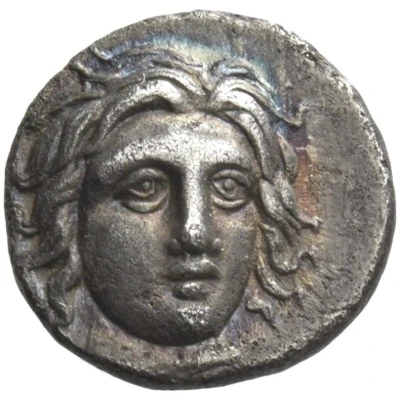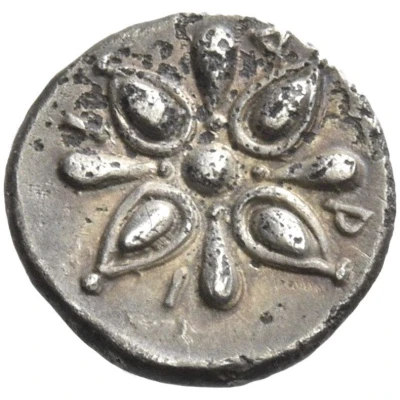


© Numismatica Ars Classica NAC AG
Trihemiobol - Idrieus Halikarnassos 345 BC - 344 BC
| Silver | 0.82 g | 10 mm |
| Issuer | Achaemenid Satrapy of Caria (Achaemenid Satrapies) |
|---|---|
| Satrap | Idrieus (351 BC - 344 BC) |
| Type | Standard circulation coin |
| Years | 345 BC - 344 BC |
| Value | Trihemiobol (¼) |
| Currency | Chian-Rhodian drachm |
| Composition | Silver |
| Weight | 0.82 g |
| Diameter | 10 mm |
| Shape | Round (irregular) |
| Technique | Hammered |
| Orientation | Variable alignment ↺ |
| Demonetized | Yes |
| Updated | 2024-10-10 |
| Numista | N#389114 |
|---|---|
| Rarity index | 97% |
Reverse
Star-like floral pattern.
Script: Greek
Lettering: I – Δ – P – I
Translation: Idrieus
Comment
Konuk 1998, 297-298, Type 2.1; Konuk 2013, 26.
Interesting fact
One interesting fact about the Trihemiobol coin is that it features a unique blend of ancient Greek and Persian design elements. The obverse side of the coin depicts the profile of the Persian king, Idrieus, while the reverse side features a traditional Greek symbol, the owl of Athena, surrounded by a Persian-style border. This fusion of design styles reflects the cultural exchange and influence that occurred during the Achaemenid Empire's rule over the Satrapy of Caria.